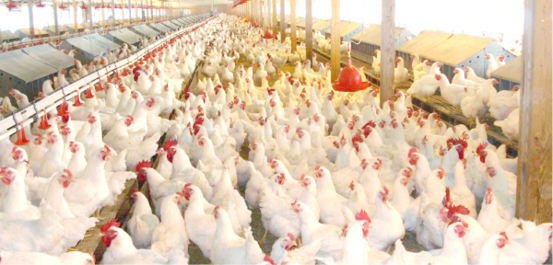Water is an essential nutrient yet is given little focus. However, water plays an important role in many bodily functions including nutrient digestion and metabolism and transport of nutrients via the blood. Water aids in the transit of feed through the digestive tract by softening the feed and is involved in the flushing of fecal and uric acid waste products. Additionally, water plays a vital role in body temperature regulation.
The importance of water is clearly visible after periods of peak feeding or feed cleanup when birds will move to the drinker lines to get their water intake. For these reasons, we recommend ensuring sufficient drinking space (8 to 10 broiler breeders per nipple) and the correct flow rates at each age. Insufficient drinker space or water volume will lead to poor growth rate and flock uniformity.
- JUST IN: Like Anthony Joshua, Kamaru Usman loses championship title
- Mixed Metaphors: Prosecute Ibrahim Magu. Don’t Persecute Him
To support water balance, three forms of water are available to the chicken. Two forms are well known: drinking water accounting for 75 per cent of the daily requirement and bound water in the feed accounting for 7.5 to 10 per cent of the requirement. The third less recognized form is metabolic water, created by the body during oxidation of nutrients and accounts for 15 to 25 per cent of the bird’s requirement.
Water intake can be altered by adjusting the feed formulation in two ways. The first is by adjusting the feed protein level which will have a direct effect on water consumption. A high protein feed will reduce the production of metabolic water but also increase the amount of water required to excrete excess nitrogen. Therefore, a higher protein diet will generally lead to a higher water consumption. If the goal is to reduce the amount of water consumed, then formulate feed with higher amounts of synthetic amino acids and reduce the overall crude protein levels.
Feed can also have an influence on water balance through electrolyte adjustment. Although several methods are available to calculate electrolyte balance, they are very difficult to use in practice. Having a good balance of electrolytes is essential regarding water intake and litter quality. Excess levels of certain minerals like sodium, chlorine and potassium must be avoided as they stimulate excessive water intake, causing wet droppings. In some cases, it may be best to simplify the process by balancing sodium and chloride, while providing potassium and sulphate through amino acids. Set sodium ranges between 0.14 to 0.18 per cent and chloride equal to or a maximum of 0.02 per cent higher than sodium.
In coastal regions, the salinity (total dissolved solids; TDS) in these regions is generally higher than normal and must be considered. In this case, for optimal performance, set the TDS between 0 to 1000 ppm. Above 3000 ppm, performance will be impaired. When TDS is high, the Na/Cl concentration in the water can be offset in the feed. Water hardness also has an effect and sometimes corrections are required. Generally, the corrections are driven by calcium and magnesium concentrations.
Feed contains about 12.5 to 13.5 per cent moisture with the moisture content mainly being derived from the major ingredient (cereals). Within the same feed mill, the mash feed moisture tends to be 0.2 to 0.3 per cent units lower than the pelleted feed. Crumbled feed usually has the same moisture content as the mash feed. Almost 99 per cent of the moisture contained in the mash feed is “bound” within the cells of the feed ingredients. During the pelleting process, moisture is added in the form of steam to cook and render the feed to pass through pellet dies. Most of the added moisture then is removed during the cooling process. The hot, pelleted feed must be cooled within +/- 2.7 °C (+/- 5 °F) of the ambient temperature prior to storage and shipping to prevent the accumulation of free moisture into the feed from the surrounding air. Feeds containing higher than 0.5 per cent of free moisture are prone to mold growth. A feed moisture higher than 14 per cent for mash and 14.5 per cent for pellets is not common and must be evaluated for the moisture origin to prevent excess “free” moisture.
The water contained in the feed is used by the birds once the digestion process begins in the intestine. Cereals stored for a prolonged period usually contain a low amount of moisture and lead to feeds with low moisture (10.5 to 11.5 percent) which is not a palatability problem. However, dry unground ingredients may produce fine powders during the grinding process, causing higher fine contents in the mash and pelleted feed. Birds are usually inefficient at consuming feeds with high fine contents.
Having a final feed product with high digestibility is essential when formulating. However, there are several things to consider while formulating that may have a negative impact on digestibility. A low pH in the proventriculus promotes digestion. However, calcium and carbonate have a high buffering capacity that makes reducing the pH in the proventriculus more difficult. Water, especially in higher amounts, can also be an excellent buffer.
Source: The poultry site

 Join Daily Trust WhatsApp Community For Quick Access To News and Happenings Around You.
Join Daily Trust WhatsApp Community For Quick Access To News and Happenings Around You.

